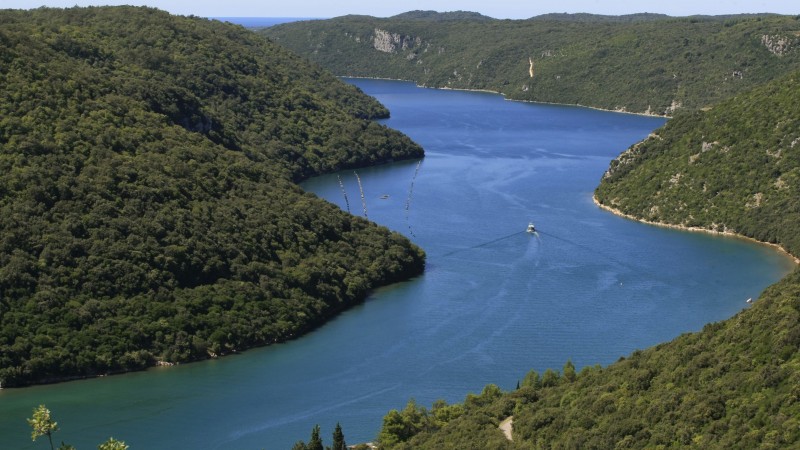Lim Canal
The Lim Canal is a marine reserve with a status of protected landscape. The canal is a 12-km-long bay, about 600 m wide at its entrance, and 33 m deep. It is a flooded karst valley (caused by melting of glaciers) of the ancient paleo-Pazinčica River, created in Jurassic limestone. The river later became subterranean, disappearing in the Pazin Cave, while a part of it remained aboveground (drying out in the Lim Valley, but mostly as the Lim Canal).
The diversity of the deciduous vegetation on the southern banks and the evergreen vegetation on the northern banks of the bay is a unique and rare ecological occurrence.
At the end of the Lim Canal stands the Romuald’s Cavern where, according to legend, lived the Benedictine monk St. Romuald (the founder of the Camaldolese order) at the beginning of the 11th century (Ravenna, 950 – Val del Castro, 1027). In 1970s, traces of the prehistoric man, the Palaeolithic hunter, were found: archaeological finds belonging to the Gravettian Upper Palaeolithic culture (approximately 20,000 years ago). The presence of the younger Palaeolithic hunter was confirmed when a Homo sapiens child’s tooth was discovered.
Stone was dug from numerous quarries along the banks of the Lim Canal, most of which was the so-called Istrian ‘biancone’ (limestone from the upper Jurassic).

